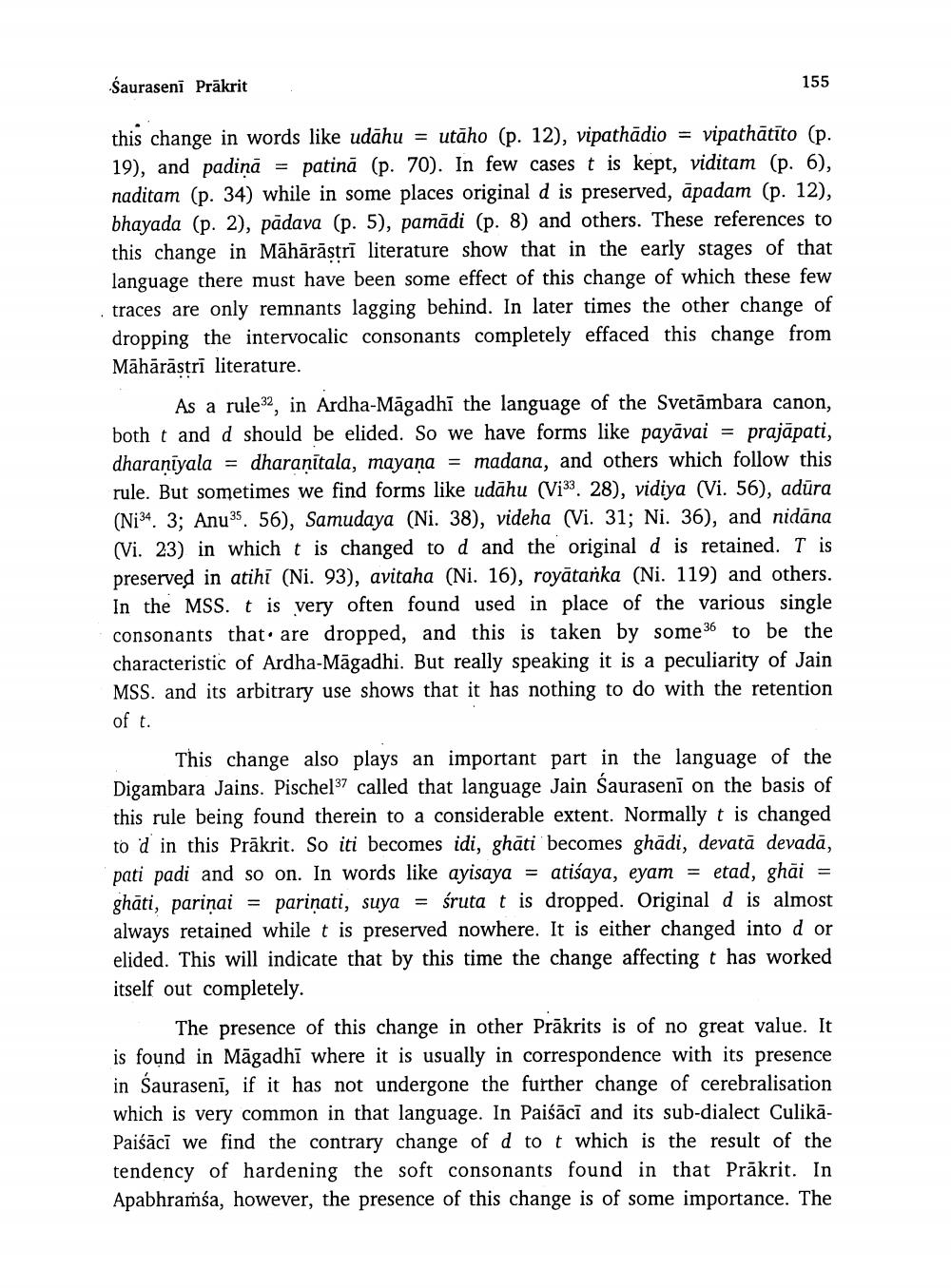________________
Sauraseni Prākrit
155
this change in words like udāhu = utāho (p. 12), vipathādio = vipathātīto (p. 19), and padiņā = patinā (p. 70). In few cases t is kept, viditam (p. 6), naditam (p. 34) while in some places original d is preserved, āpadam (p. 12), bhayada (p. 2), pädava (p. 5), pamādi (p. 8) and others. These references to this change in Māhārāstrī literature show that in the early stages of that language there must have been some effect of this change of which these few traces are only remnants lagging behind. In later times the other change of dropping the intervocalic consonants completely effaced this change from Māhārāstri literature.
As a rule 32, in Ardha-Magadhi the language of the Svetāmbara canon, both t and d should be elided. So we have forms like payāvai = prajāpati, dharanīyala = dharanītala, mayana = madana, and others which follow th rule. But sometimes we find forms like udāhu (Vi33. 28), vidiya (Vi. 56), adūra (Ni34. 3; Anu 35. 56), Samudaya (Ni. 38), videha (Vi. 31; Ni. 36), and nidāna (Vi. 23) in which t is changed to d and the original d is retained. T is preserved in atihi (Ni. 93), avitaha (Ni. 16), royātanka (Ni. 119) and others. In the MSS. t is very often found used in place of the various single consonants that are dropped, and this is taken by some 36 to be the characteristic of Ardha-Māgadhi. But really speaking it is a peculiarity of Jain MSS. and its arbitrary use shows that it has nothing to do with the retention of t.
This change also plays an important part in the language of the Digambara Jains. Pischel7 called that language Jain Sauraseni on the basis of this rule being found therein to a considerable extent. Normally t is changed to d in this Prakrit. So iti becomes idi, ghāti becomes ghādi, devatā devada pati padi and so on. In words like ayisaya = atiśaya, eyam = etad, ghāi = ghāti, pariņai = pariņati, suya = śruta t is dropped. Original d is almost always retained while t is preserved nowhere. It is either changed into d or elided. This will indicate that by this time the change affecting t has worked itself out completely.
The presence of this change in other Prākrits is of no great value. It is found in Māgadhi where it is usually in correspondence with its presence in Saurasenī, if it has not undergone the further change of cerebralisation which is very common in that language. In Paiśācī and its sub-dialect CulikāPaiśācī we find the contrary change of d to t which is the result of the tendency of hardening the soft consonants found in that Prākrit. In Apabhraíía, however, the presence of this change is of some importance. The




